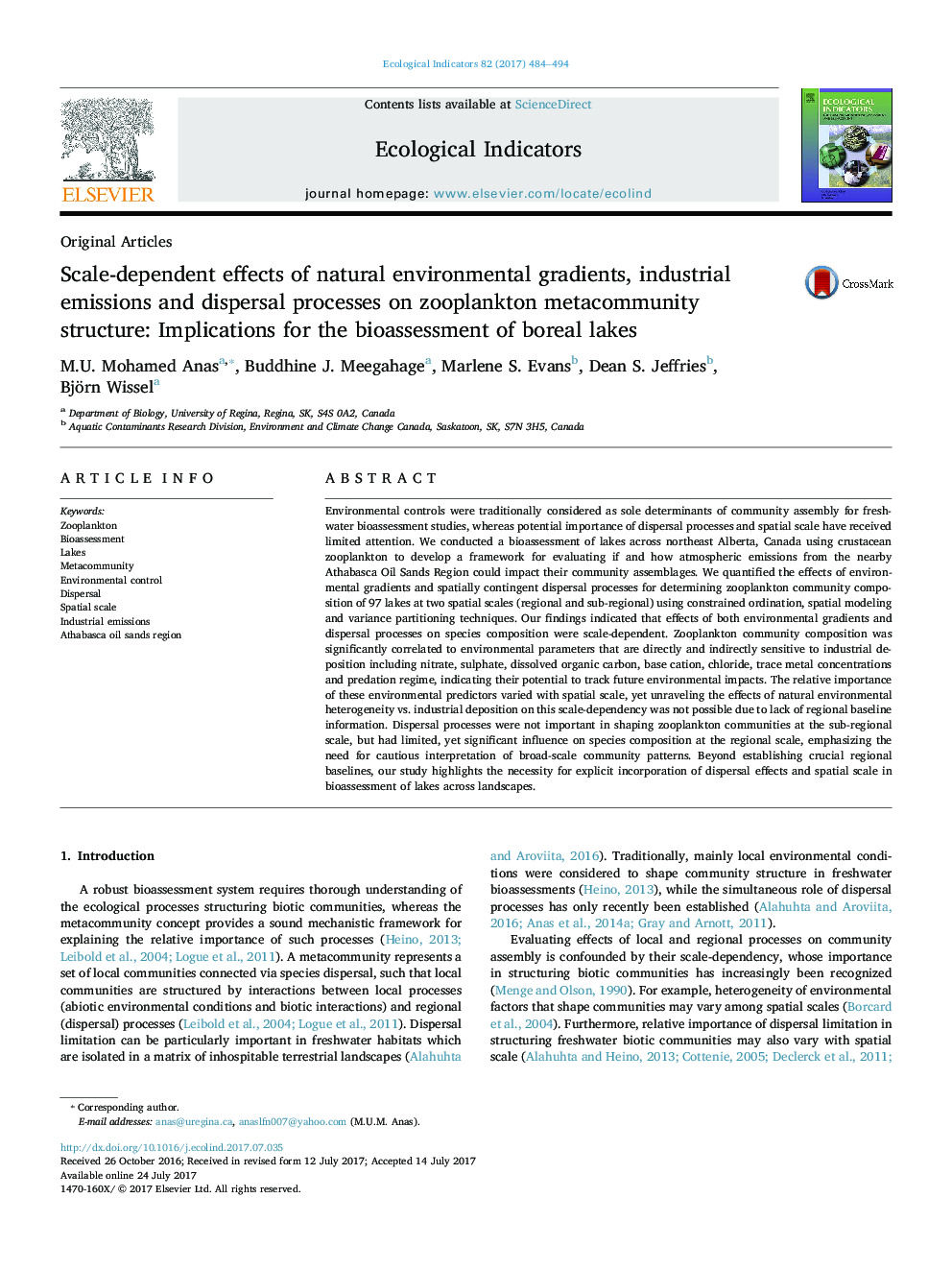| کد مقاله | کد نشریه | سال انتشار | مقاله انگلیسی | نسخه تمام متن |
|---|---|---|---|---|
| 5741349 | 1617120 | 2017 | 11 صفحه PDF | دانلود رایگان |
- Environmental control of zooplankton was dominant irrespective of spatial scale.
- Environmental predictors varied among spatial scales.
- Dispersal effect was only important at broader spatial scales.
- Effects of oil sands emissions on lakes were likely localized.
Environmental controls were traditionally considered as sole determinants of community assembly for freshwater bioassessment studies, whereas potential importance of dispersal processes and spatial scale have received limited attention. We conducted a bioassessment of lakes across northeast Alberta, Canada using crustacean zooplankton to develop a framework for evaluating if and how atmospheric emissions from the nearby Athabasca Oil Sands Region could impact their community assemblages. We quantified the effects of environmental gradients and spatially contingent dispersal processes for determining zooplankton community composition of 97 lakes at two spatial scales (regional and sub-regional) using constrained ordination, spatial modeling and variance partitioning techniques. Our findings indicated that effects of both environmental gradients and dispersal processes on species composition were scale-dependent. Zooplankton community composition was significantly correlated to environmental parameters that are directly and indirectly sensitive to industrial deposition including nitrate, sulphate, dissolved organic carbon, base cation, chloride, trace metal concentrations and predation regime, indicating their potential to track future environmental impacts. The relative importance of these environmental predictors varied with spatial scale, yet unraveling the effects of natural environmental heterogeneity vs. industrial deposition on this scale-dependency was not possible due to lack of regional baseline information. Dispersal processes were not important in shaping zooplankton communities at the sub-regional scale, but had limited, yet significant influence on species composition at the regional scale, emphasizing the need for cautious interpretation of broad-scale community patterns. Beyond establishing crucial regional baselines, our study highlights the necessity for explicit incorporation of dispersal effects and spatial scale in bioassessment of lakes across landscapes.
Journal: Ecological Indicators - Volume 82, November 2017, Pages 484-494
